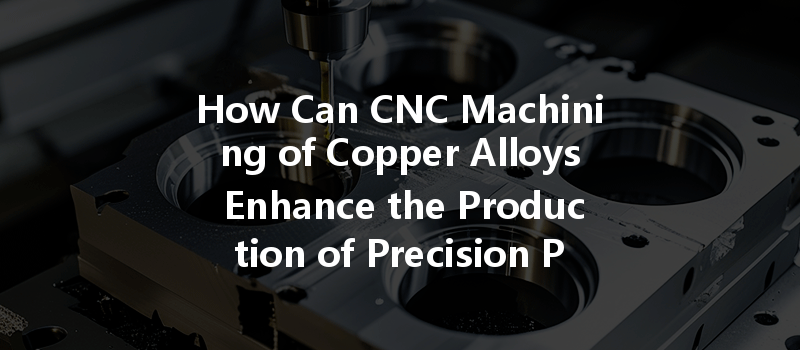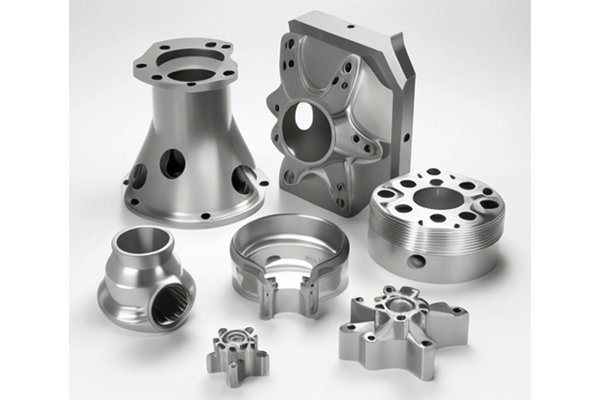: The Versatility of Copper Alloys
Did you know that copper alloys have been used by humans for over 10,000 years? From ancient tools and coins to modern electronics and machinery, copper’s innate properties make it one of the most versatile metals known to man. The blend of ductility, thermal conductivity, and resistance to corrosion has justified its wide-ranging application, particularly in manufacturing precise components.
CNC (Computer Numerical Control) machining plays a vital role in harnessing the advantages of copper alloys, enabling manufacturers to produce high-quality precision parts efficiently and reliably. In this blog, we will explore how CNC machining of copper alloys enhances the production of precision parts, the benefits it brings to various industries, and practical solutions for potential challenges in the machining process.
Section 1: Understanding Copper Alloys
Before diving into CNC machining, it’s essential to understand the foundation: what copper alloys are, their types, and the properties that make them suitable for precision machining.
1.1 What Are Copper Alloys?
Copper alloys are metallic materials made by combining copper with various other elements to enhance specific properties. The most common alloying elements include:
Each combination yields unique characteristics suited for different applications.
1.2 Types of Copper Alloys
1.3 Properties of Copper Alloys
Section 2: The Role of CNC Machining
Computer Numerical Control (CNC) machining has revolutionized the manufacturing process by allowing for automated control of machining tools, resulting in high precision and efficiency.
2.1 How CNC Machining Works
CNC machines use computer-programmed commands to control the movement of machinery—such as lathes, mills, and routers—directly affecting the shape and design of the workpiece. The key features include:
2.2 The Benefits of CNC Machining Copper Alloys
Section 3: Enhancing Precision Part Production
Now that we understand the basics of CNC machining and copper alloys let’s delve into how combining these two elements enhances the production of precision parts.
3.1 Improved Craftsmanship
CNC machining allows for delicate designs and fine features on precision parts, especially in industries like aerospace, automotive, and electronics, where manufacturing tolerances can be as tight as ±0.005 inches.
3.2 Speed and Efficiency
Using CNC machines cuts production time dramatically. Traditional methods can take hours or days to produce a single part, whereas CNC machinery can produce hundreds of parts in the same timeframe, depending on design complexity.
This speed encompasses:
3.3 Versatile Machining Techniques
CNC machining encompasses various techniques suited for multiple applications, specifically tailored for copper alloys:
Section 4: Applications of CNC Machining in Copper Alloys
4.1 Aerospace Industry

The aerospace industry relies on copper alloys for their exceptional strength-to-weight ratio and excellent thermal conductivity. Typical applications include:
4.2 Automotive Industry
In the automotive sector, the use of copper alloys reduces weight while ensuring durability and efficiency. CNC machined components in this industry often include:
4.3 Electronics Industry
In electronics, precision and reliability are paramount. Common applications include:
Section 5: Challenges in CNC Machining of Copper Alloys
Despite its advantages, CNC machining of copper alloys comes with its share of challenges:
5.1 Tool Wear
Copper alloys can be abrasive, leading to increased tool wear. Choosing the right tooling material and coating can mitigate this issue.
5.2 Chip Formation
Machining copper alloys can create long, stringy chips that can interfere with production. Utilizing proper chip-breaking techniques can help manage this issue.
5.3 Thermal Management
Copper’s excellent thermal conductivity poses challenges in heat management during machining. Proper cooling systems are essential to maintain optimal operating temperatures and prevent tool damage.
Section 6: Effective Solutions to Common Challenges
6.1 Material Selection
Choosing the right grade of copper alloy can have a significant impact on machining efficiency and tool life.
6.2 Tool Optimization
Improving tool design through:
6.3 Process Parameters
Adjusting speed, feed rates, and coolant can optimize production:
Section 7: Future Trends in CNC Machining of Copper Alloys
As technology advances, several trends are shaping the future of CNC machining, particularly with copper alloys:
7.1 Automation and Robotics
The incorporation of AI and robotics in CNC machining is increasing productivity. Automated tool changes and quality checks contribute to minimizing downtime and enhancing precision.
7.2 Advanced Materials
New copper alloys are being developed that combine copper with lighter and more durable materials, improving performance for specific applications.
7.3 Integrated Technologies
The integration of IoT (Internet of Things) in CNC systems will enable manufacturers to collect valuable data insights, enhancing operational efficiency and predictive maintenance.
: The Importance of CNC Machining Copper Alloys
In summary, CNC machining offers a transformative approach to the production of precision parts using copper alloys. Through enhanced precision, efficiency, and versatility, industries from aerospace to electronics are benefiting from this cutting-edge technology. Despite challenges like tool wear and heat management, careful material selection, tool optimization, and process innovations can mitigate these issues effectively.
Understanding and harnessing the possibilities of CNC machining in copper alloys is no longer just an option—it’s an essential consideration for any manufacturer seeking to stay competitive in a rapidly evolving market.
As we move further into an era driven by technology, the importance of precision in the manufacturing of components will only grow. The strategies covered in this blog provide a robust foundation to not only overcome existing challenges but to take full advantage of the incredible opportunities presented by CNC machining of copper alloys. It is imperative to remain informed and adaptive to these advancements, ensuring that your business can thrive in an ever-competitive landscape.






